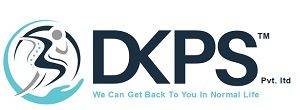There aren’t many scientific studies about cupping.
A report, which was released in 2015 in The Journal of Traditional and Complementary Medicine notes that it can aid with herpes zoster , acne, and pain management.

Cupping Therapy in Delhi is a traditional alternative form of medicine where a therapist places special cups onto your skin for a couple of minutes to produce suction. It is used for a variety of reasons, including helping to ease inflammation, pain, blood flow, relaxation and well-being, as well as a kind of deep tissue massage therapy.
The cups can be made of:
Cupping Therapy in Delhi is trendy today, but it’s certainly not something new. It’s been practiced since the ancient Egyptian, Chinese, and Middle Eastern cultures. The oldest of medical textbooks available The Ebers Papyrus, describes how the early Egyptians utilized cupping therapy as early as 1,550 B.C.
Types
There are a variety of methods for cupping, which include:
In both forms of cupping, the therapist will place any flammable material such as herbs, alcohol, or even paper into the cup and then set it on flame. When the fire is out, they will place the cup upside-down on your skin.
When the air inside this cup gets cooler, it forms an air vacuum. The skin begins to redden and rise as blood vessels expand. The cup can be kept in place for about 3 minutes.

A modernized version of cupping employs a pump made of rubber instead of fire in order to generate the vacuum within the cup. Some therapists also employ silicone cups, which you can move from place to place on your skin to create the effect of a massage.
Wet cupping can create a slight suction by leaving the cup in place for approximately three minutes. The therapist removes the cup using a small sharp instrument to make small, nitty cuts to the skin. Then, they perform another suction in order to draw out some blood. It is possible to get 3-5 cups during your first time. You could even use 1 to check out how it goes. It’s not often that you get more than 7 cups, the British Cupping Society notes.
After that, you can receive an antibiotic cream and a bandage to avoid the infection. The skin should appear normal after a week or two.
The advocates of cupping therapy in Delhi consider that the practice of wet cupping helps remove toxic substances and toxins out of the body and promotes healing. However, this isn’t proven. Some people also go for “needle cupping,” in which the therapist inserts acupuncture needles on your body, then covers it with the cups.
There aren’t many scientific studies about cupping.
A report, which was released in 2015 in The Journal of Traditional and Complementary Medicine notes that it can aid with herpes zoster , acne, and pain management.
Similar to the findings of an article from 2012, which was released in PLoS One. Australian, as well as Chinese researchers, looked over 135 studies about cupping. Researchers concluded that cupping therapies can be effective when people are also receiving other treatments, such as medications or acupuncture, for various conditions and illnesses including:
However, the researchers also noted that many research studies that they studied may have been biased and that better research is needed.
But there’s still no research to back it all up.
Cupping is relatively safe as long as you go to a qualified medical professional. However, you may experience these adverse effects on the skin where the cups are placed on the skin:
If the cups or equipment are contaminated by blood and aren’t properly sterilized in between the patients infections like Hepatitis B and C could be transmitted.
Consult your physician before you begin cupping or any alternative or complementary medicine. Talk to your cupping practitioner as well, prior to attempting the practice. Ask:
